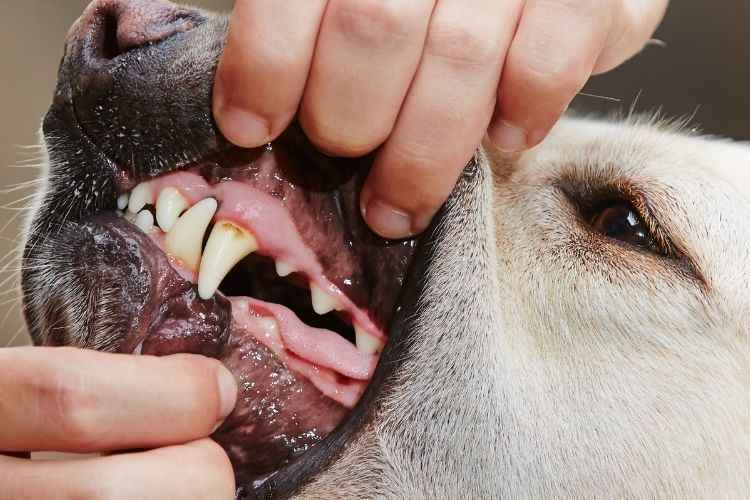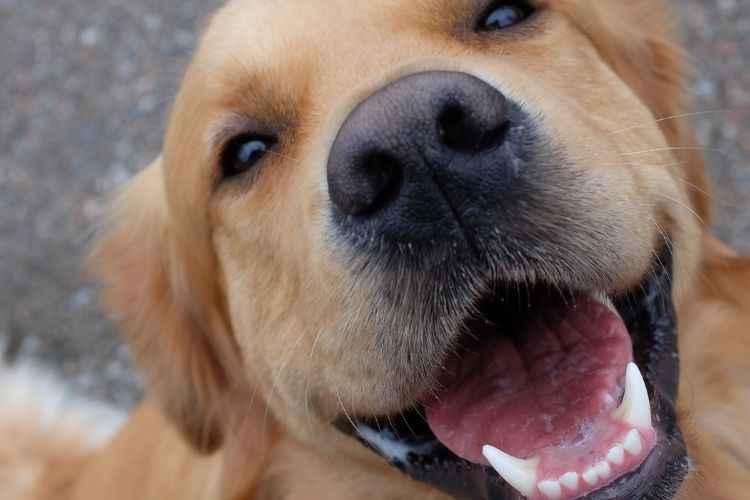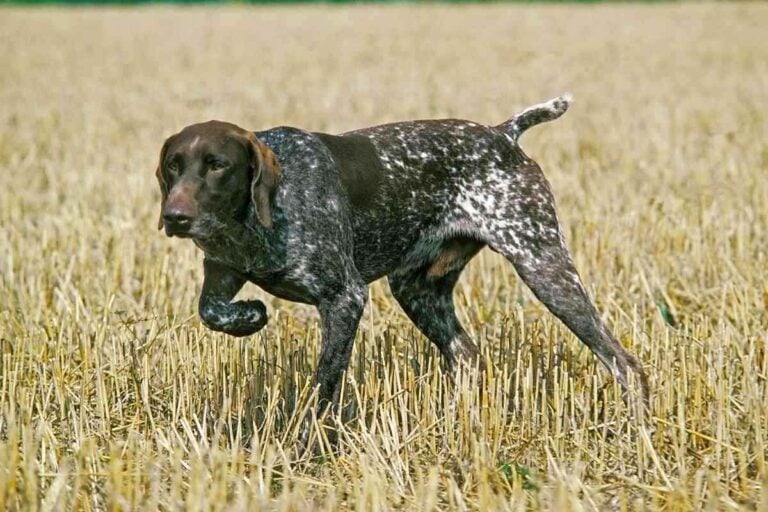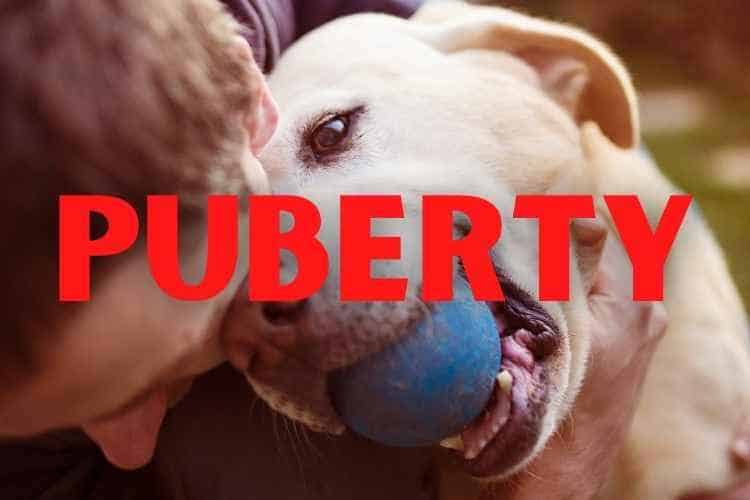Why are dogs lips black? (Here’s why…)
My pooch is great. He’s one of my best friends and is more like a human to me than an animal.
There are some major differences between the two of us, though…
He has black lips, but his gums are red and pink. What’s up with that? At least that’s what I was asking myself until I looked up the answer…
Why are dogs lips black? It turns out, the dark pigmentation of their lips protects them from the harmful effects of the sun’s radiation. Dogs can also lose color and pigmentation in their lips. They turn pink when this happens.
Dogs’ lips are black because of the protection it offers from UV light.
Dog’s Lips Can Change Color
If your dog’s lips start to change pigmentation, that can be a sign of several different things. The most common cause of a dog’s black lips turning pink is seasonal changes.
If there is not as much sunlight, your dog may not produce as much melanin, which affects his skin pigmentation. With less sun exposure, their natural lip coloration will be more visible and show up in a lighter shade than the rest of their body.
If they look pale or red, this could also be because of dryness and dehydration, leading to tissue deterioration in the mouth if left untreated.
Melanin & Pigmentation in Dogs
It is normal for dogs to have more melanin in certain areas of their skin, just like with humans. This can result in variations in the tone of a dog’s coat that depend largely on genetics and location.
For example, arctic breeds are often darker because they need protection from the sun during long winter days without sunlight.
Just like people who tan easily actually produce less pigment than those who don’t tan, some lighter-coated canine breeds might not be able to protect themselves against harsh ultraviolet radiation.
In contrast, others may simply lack production capabilities altogether thanks to their genetics.
This is why black dogs can start to show pink or red lips when they get some sun.
Let’s Just Say that Again: Black Lips Keep Dogs Safe from the Sun
It’s no secret the sun isn’t kind to light skin. Dogs need to be protected from its harmful rays just like we do. Especially during those hot summer months when dogs are most susceptible to too much sun exposure.
If your dog had a pink, or red mouth, you might notice it getting irritated or chapped if he spends too much time in direct sunlight. He would need chapstick!
Why are my dog’s lips turning pink?
The change of seasons and the amount of sunlight can cause a dog to lose pigmentation on its lips, and they can turn pink. Stress and genetics also play a role. Anything that causes a dog’s melanin production to reduce.
Changes in the color of your dog’s skin and pigmentation can happen at various stages in their lives. It’s usually nothing to worry about.
Hypopigmentation & Hyperpigmentation
After analyzing your dog’s skin, you might find that it changes color. It could go from a lighter complexion to darker or vice versa! This is called hypopigmentation and hyperpigmentation, respectively.
There are many reasons why this may happen: genetics, stress levels can affect the melanin production in their skin; however, some breeds of dogs have more pigment than others, so they don’t show these signs as much like pugs, for example, who’ll always be pink-faced since no sun exposure will darken them any time soon.
Something to keep an eye on is if your dog has a fever, which could be the cause of these changes in lip color and pigmentation.
The bottom line: It’s not always easy figuring out what might happen with our dogs’ lips, but it doesn’t hurt to know
What does it mean when a dog’s gums turn black?

If your dog’s gums suddenly turned black, it is likely a sign of gum disease, especially if there is an odor and visible tar buildup. It could be a sign of something more serious too. Take him to the vet ASAP.
Some dogs naturally have black gums. Black gums would be only a sign of a problem, like gum disease, if they appeared suddenly.
Not all dogs have black lips or black gums. The color depends on the genetics of the breed.
Gum Disease
Dogs are susceptible to periodontal disease, just like humans. The signs of gum disease in dogs are similar to those in people: bleeding, redness, and swelling.
The most common sign of gum disease is halitosis (bad breath). It’s caused by plaque buildup on the teeth causing irritation around the gum line. As it irritates the gums, bacteria grow to create an odor that can be hard to rid of.
A dog’s gums can turn grey or dark black when they have gum disease. When the blood vessels in the tissue (vasculature) become inflamed, the color of the tissue can change.
What color should the inside of a dog’s mouth be?
Different colors in a dog’s mouth usually are not normal. The inside of a dog’s mouth should be pink, and the tongue should have either no color or just a little red at the top, especially while eating.
There are a few reasons why you might notice your dog’s mouth changing color.
There are some breeds of dogs that can develop black lips or black gums. Hypopigmentation and hyperpigmentation are at play here. These two things are interrelated.
Black coloration of the gum line could be a sign of underlying gum disease. Because the color comes from inflammation, getting it checked out by your vet is important.
Changes in your dog’s mouth color can also be caused when your dog has a fever. But it’s not that common from what I understand.
The bottom line: Always consider if the changes you see are part of a bigger problem and seek veterinary assistance immediately! It might save your dogs life.
The inside of your dog’s mouth should be pink with no visible discoloration or dark spots indicating plaque buildup.
Why do dogs have black gyms?
There are a few different health problems that could cause your dog’s gums to turn black, including bacteria, gum disease, or even cancer in some cases. Take them to the vet as soon as possible if you see any changes in their mouth color.

Why do dogs have serrated lips?
Dogs with serrated lips used to seem more aggressive, but that is not true. The reason dogs have serrated lips isn’t entirely understood.
Are there dogs without black lips?
Yes. In many dogs, the color of the gums will slowly fade as they get older.
In some cases, dogs may have black gums due to plaque buildup. A good brush and toothpaste regularly can help with this problem.
Some dogs may see changes in their gum color as they get older, but that doesn’t mean it’s cause for concern. It’s important to take them to the vet when you see any changes in their mouth color just to be safe.
Final Thought
Hopefully, this article has given you some insights into why dogs’ lips are black.
I hope it’s also taught you that taking care of your dog’s teeth and gums is critical for good health.
By taking care of your dogs gums, you will be able to keep your dog’s mouth healthy and plaque-free for many years.
Just remember that one of the best things you can do for your dog is to brush his teeth. By doing this, you are helping him stay at peak health while also reducing the risk of future problems.





